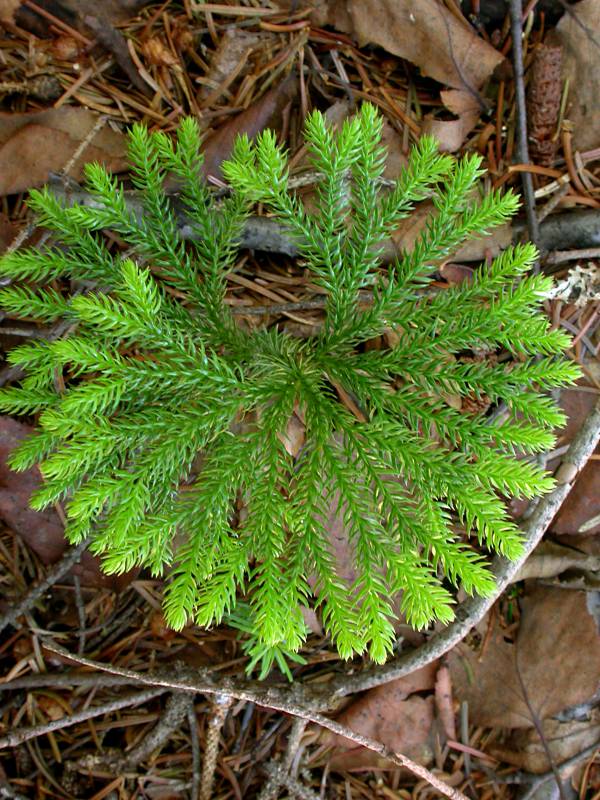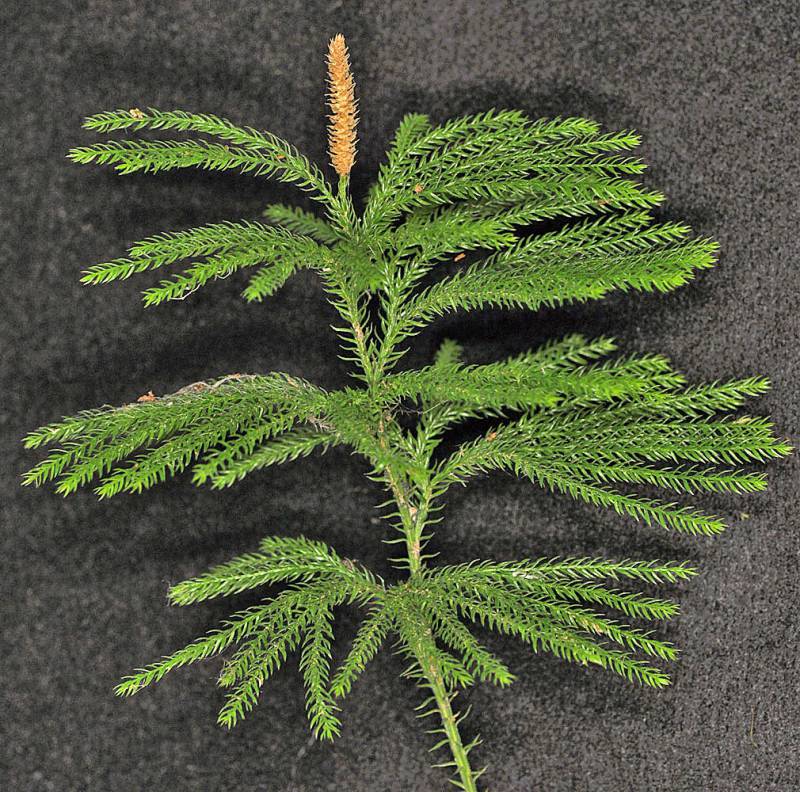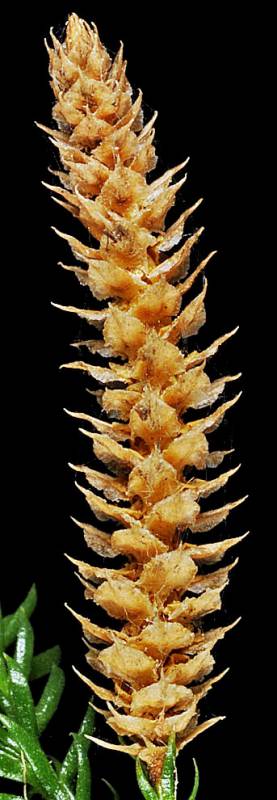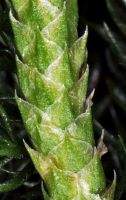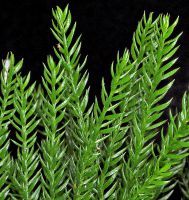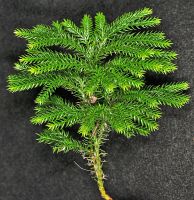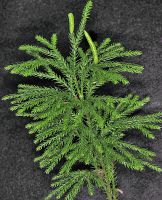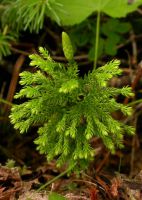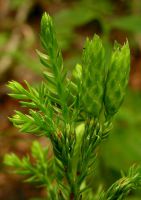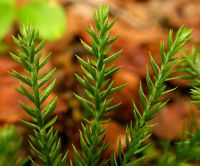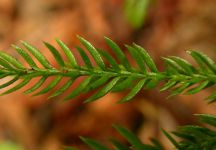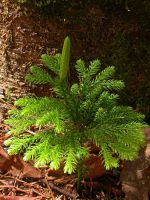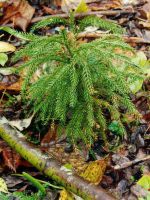Distribution: Occurring in the Cascades Range and in northeastern Washington; Alaska to Washington, northern Idaho, and western Montana, east across the northern U.S. and Canada to the Atlantic Coast: south in the Appalachians to North Carolina.
Habitat: Woodlands and open brushy areas. In Washington, found mostly among rock or talus with thick moss or duff layers, often under brush or on edges of forest. At mid elevations in the mountains.
Origin: Native
Growth Duration: Perennial
Conservation Status: Sensitive in Washington (WANHP)
From a subterranean horizontal stem with scattered erect stems; the erect stems much branched above the base and resembling a small conifer tree, the branches spreading outwards, sometimes loosely fan-shaped; stems leafy throughout.
Needle-like, to 4 mm long, 6-ranked along stem. On horizontal side branches the leaves are arranged in two rows on top of stem, one row on each side of stem, and two rows on bottom of stem.
In one to several spore cones (strobili) at tips of erect stems; cones greenish to tan, 12-55 mm long.
The much-branched tree-like growth form and the subterranean horizontal stems sufficiently distinguishes L. dendroideum from our other Lycopodium species. L. annotinum and L. clavatum have much less branched erect stems and the horizontal stems are above ground.
In Hitchock & Cronquist\\'s Flora of the Pacific Northwest, this species is treated as Lycopodium obscurum. Current taxonomy splits L. obscurum s. lat. into three distinct species. The other two occur only in eastern North America. They can be differentiated by the leaf arrangement on horizontal side branches: L. obscurum s.str. has leaves in one row on top, two rows on each side in which the leaves are twisted and flattened, and one row on the bottom in which the leaves are much reduced, while L. hickeyi has leaves arranged in one row on top, two rows on each side, and one row on the bottom, in which none of the are leaves twisted-flattened, and the lower row leaves are not reduced in size.
See Flora of North America for an updated treatment.
Publication: Fam. Huperziac. Lycopodiac. New England 84. 2003.
Lycopodium hickeyi W. H. Wagner, Beitel & R. C. Moran, misapplied [FNA2]
Lycopodium obscurum L., misapplied [FNA2, HC]
Lycopodium obscurum L. var. dendroideum (Michx.) D.C. Eaton
PNW Herbaria: Specimen records of Dendrolycopodium dendroideum in the Consortium of Pacific Northwest Herbaria database.
WA Flora Checklist: Dendrolycopodium dendroideum checklist entry.
OregonFlora: Dendrolycopodium dendroideum information.
E-Flora BC: Dendrolycopodium dendroideum atlas page.
CalPhotos: Dendrolycopodium dendroideum photos.
USDA Plants: Dendrolycopodium dendroideum information.

